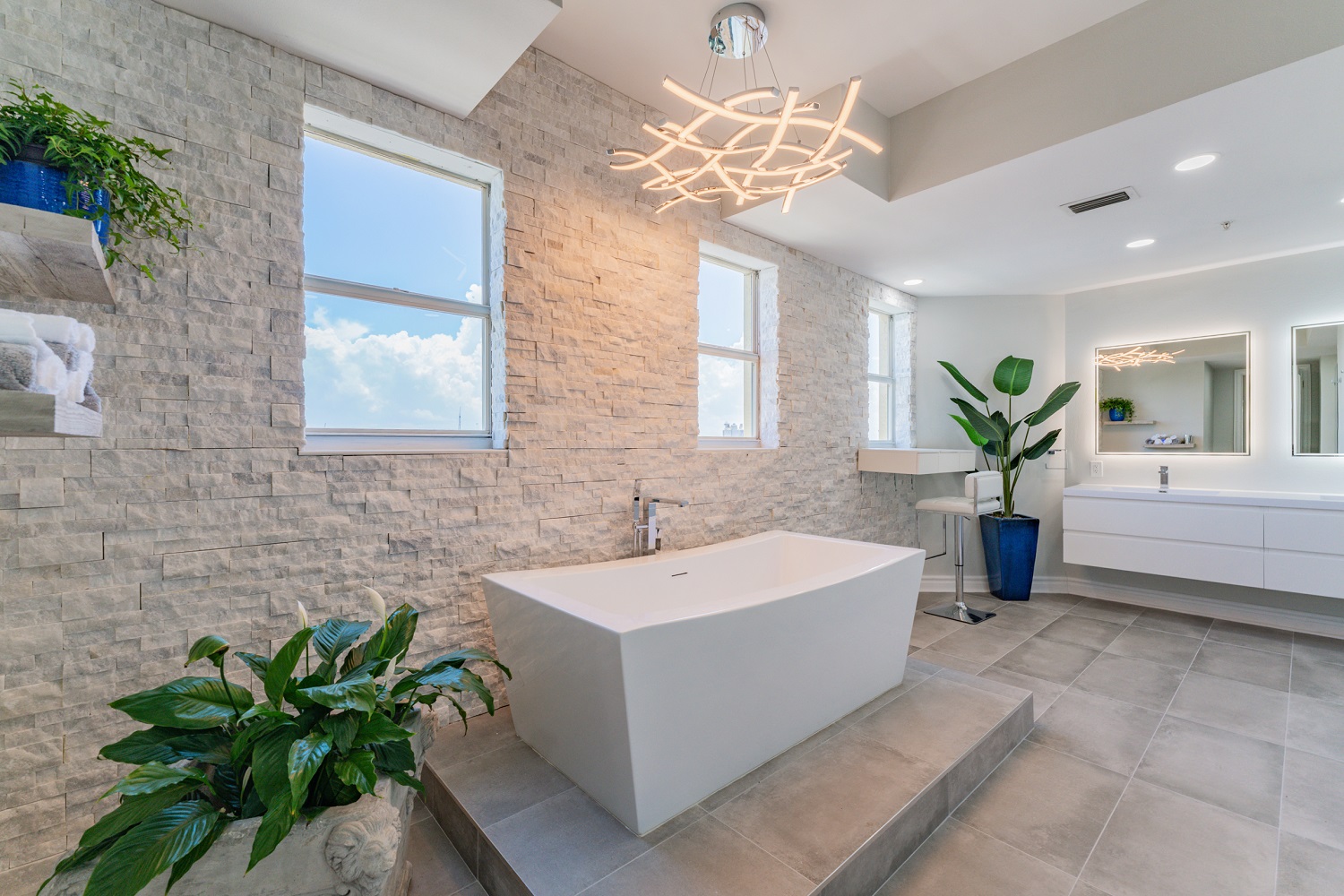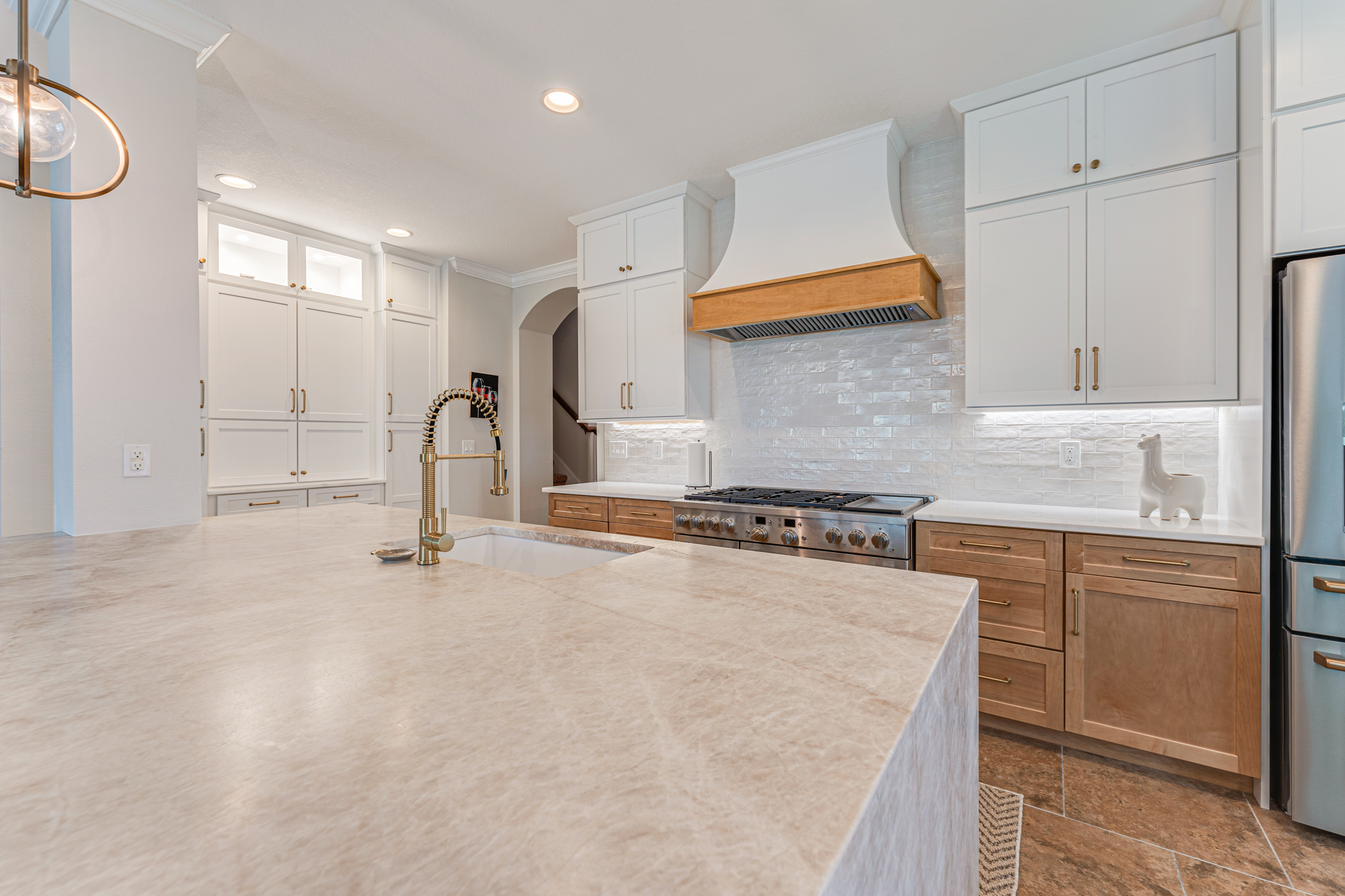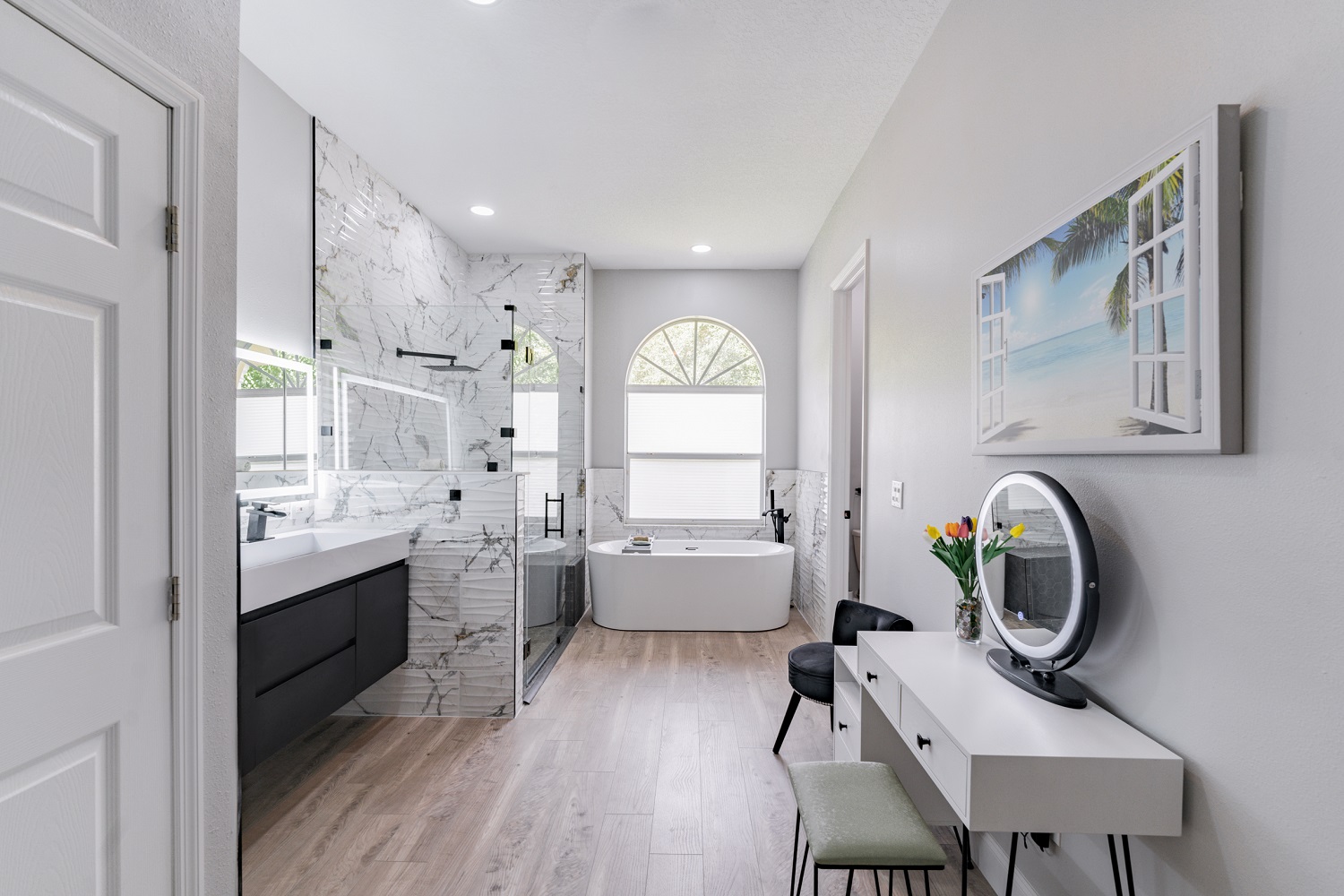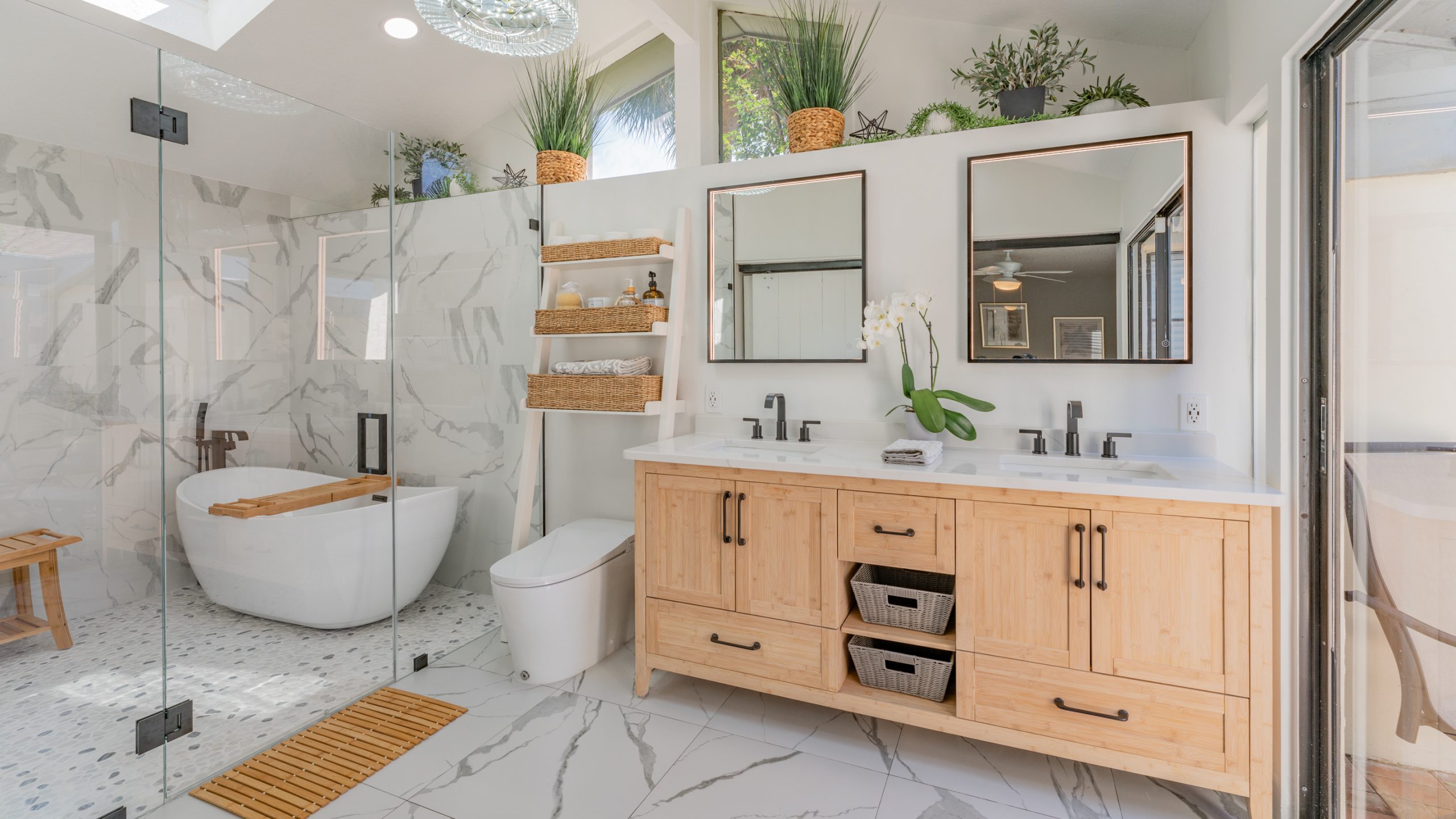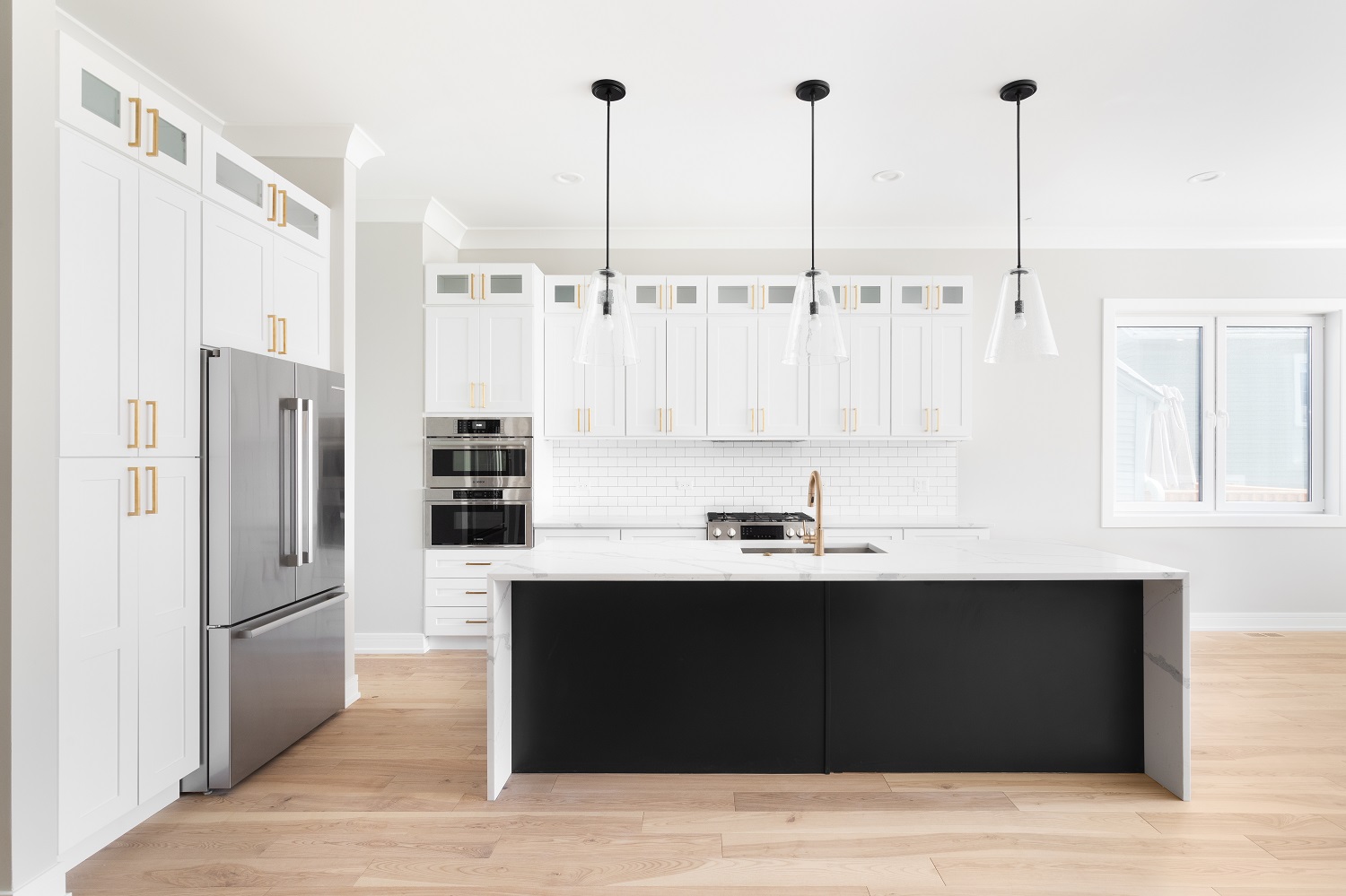
The Top High-Tech Features for Modern Kitchens in 2023
Welcome to the dazzling future of cooking, where culinary finesse meets high-tech innovation. Brace yourself for an enchanting journey into the realm of the 2023 kitchen, a place where smart technology revolutionizes our daily food preparation routines. Within this blog post, we will embark on a tantalizing exploration of top-tier features that are poised to redefine modern kitchens forever, from AI-assisted ovens to interactive countertops and IoT-enabled appliances. Get ready to discover how these advancements not only enhance our gastronomic adventures but also usher in unprecedented levels of convenience and efficiency.
Smart kitchens in 2023 will offer a plethora of advanced features and appliances aimed at making cooking and food preparation easier, more efficient, and more enjoyable. Some popular high-tech features include smart refrigerators with touchscreens, smart ovens that can be controlled from a smartphone, voice-controlled coffee makers, and dishwashers with sensors to detect dish dirtiness. Other useful devices for smart kitchens include smart faucets that respond to voice or touchless technology, Instant Pots with programmable cooking programs, wireless meat thermometers, and air fryers controlled by smartphones or voice commands.

Defining a High-Tech Kitchen in 2023
In the fast-paced world of technological advancements, the modern kitchen has transformed into a hub of innovation and convenience. A high-tech kitchen in 2023 is defined by the integration of cutting-edge technologies that enhance functionality, efficiency, and the overall user experience. It goes beyond traditional appliances and incorporates smart devices, automated systems, and connectivity features that revolutionize the way we cook, clean, and interact with our kitchens.
Smart refrigerators have notifications displaying the expiration dates of various groceries and can suggest personalized recipes based on the ingredients you have on hand. Smart ovens can preheat themselves to the perfect temperature as guided by an app on phones. Not only that, but connected faucets with voice control or smartphone apps allow for precise temperature and flow adjustments as well as water-saving capabilities. When it comes to cooking appliances like slow cookers and air fryers, programmable features and remote operation through smartphone apps or voice commands have become increasingly popular.
Premier Tech-Driven Features
Smart Refrigerators:
Smart refrigerators have revolutionized food storage and organization. Equipped with cameras and sensors, they can track inventory levels and provide real-time updates on expiration dates. With the help of machine learning algorithms, these refrigerators can suggest meal ideas based on the available ingredients inside. This feature not only reduces food waste but also simplifies meal planning by providing convenient recipe suggestions.
Voice-Activated Ovens:
Gone are the days when you had to manually set timers and monitor food temperatures while cooking. Voice-activated ovens will gain significant popularity in 2023, allowing for hands- control. With built-in temperature sensors and voice command capabilities, these ovens can ensure precise cooking and provide user-friendly cooking experiences. Smartphone apps also enable remote control of the oven, making it even more convenient for busy individuals.
Connected Faucets:
Connected faucets with temperature and flow control are a game-changer when it comes to water usage in the kitchen. Simply by using voice commands or smartphone apps, users can adjust the water temperature and flow precisely according to their needs. In addition to providing convenience, these faucets also offer water-saving features that promote sustainability and reduce waste.
Programmable Slow Cookers:
The rise of programmable slow cookers has simplified the art of cooking dishes that require long hours of low heat. With automatic temperature control and remote operation capabilities, these appliances ensure precise cooking settings to achieve delicious results. Whether you’re away from home or engrossed in other tasks, you can conveniently monitor and adjust the cooking process through smartphone apps or even voice commands.
By incorporating premier tech-driven features like smart refrigerators, voice-activated ovens, connected faucets, and programmable slow cookers into our kitchens, we can create spaces that offer convenience, efficiency, and a touch of futuristic elegance.

Benefits of Implementing High-Tech Features in Kitchens
In the fast-paced and tech-driven world we live in, it’s no surprise that high-tech features in kitchens have become increasingly popular. The integration of smart gadgets and appliances offers a plethora of benefits that enhance not only the overall cooking experience but also the functionality and efficiency of your kitchen. Implementing high-tech features in kitchens can greatly boost convenience. Imagine being able to access your favorite recipes, make grocery lists, and even order groceries online right from the touchscreen on your smart refrigerator. With smart refrigerators, these features are a reality. This eliminates the need for standalone recipe books or handwritten grocery lists, saving you time and effort.
Additionally, high-tech advancements in kitchen appliances provide advanced security measures for peace of mind. For instance, smart ovens come equipped with temperature probes to monitor food temperatures accurately. This feature ensures that your meals are cooked thoroughly and eliminates any guesswork. Moreover, many smart appliances can be controlled remotely through smartphone apps, allowing you to keep an eye on your kitchen activities even when you’re not at home. Another benefit is the potential for energy savings. Many high-tech kitchen gadgets are designed to be energy-efficient, automatically adjusting settings to reduce power consumption when not in use. This is particularly evident with smart dishwashers, which utilize sensors to detect how dirty dishes are and optimize water usage accordingly. By using these energy-saving features, you can potentially lower your utility bills while still enjoying modern conveniences.
Boosted Convenience and Advanced Security
High-tech features in kitchens bring an unprecedented level of convenience to the cooking experience. Smart appliances like smart coffee makers can be programmed to make coffee on demand, allowing you to wake up to freshly brewed coffee without any effort. Some even come with voice control options compatible with popular virtual assistants like Alexa or Google Assistant, making your mornings even more seamless. Moreover, high-tech kitchen gadgets provide advanced security measures that give homeowners peace of mind. Smart faucets can be controlled by voice or touchless technology, reducing the risk of cross-contamination by eliminating the need for direct contact with handles. This is especially beneficial when handling raw meats or other potentially harmful substances during food preparation.
While it’s true that traditional cooking methods have their charm, incorporating high-tech features in kitchens doesn’t necessarily mean sacrificing the traditional aspects. Instead, these advancements enhance and streamline everyday tasks, allowing you to focus more on creativity and enjoyment while preparing meals. By embracing technological innovations in your kitchen, you can find a harmonious balance between traditional cooking techniques and modern conveniences. Not only will this save you time and effort, but it will also elevate your culinary experiences and expand your possibilities in the kitchen.
Must-Have Connected Appliances and Devices for Your 2023 Kitchen
In the ever-evolving world of technology, our kitchens are not exempt from the integration of smart devices designed to make our lives easier and more efficient. Whether you are an avid home cook or someone who dabbles in culinary adventures occasionally, there are a few connected appliances and devices that have become must-haves for your 2023 kitchen.
One such essential is the smart refrigerator. This intelligent appliance goes beyond its primary function of keeping your food fresh. Equipped with internet connectivity, it offers features like inventory management, recipe suggestions based on available ingredients, and even touchscreen displays that allow you to access various apps and control other connected devices in your kitchen. With a smart refrigerator, you can minimize food waste, streamline meal planning, and enhance your overall cooking experience.
Another valuable addition to your high-tech kitchen is a cooking assistant. This could be in the form of a smart oven or a sous vide machine. These innovative devices offer precise temperature control, remote monitoring through connected apps on your smartphone or tablet, and recipe guidance that walks you through each step of the cooking process. With these features at your disposal, you can achieve perfect results every time you step foot in the kitchen.

Smart Refrigeration to Automated Coffee Makers
One of the pivotal components of any well-equipped kitchen is a reliable refrigerator. However, in 2023, having a smart refrigerator will take your kitchen to a whole new level. These cutting-edge appliances are designed with features that seamlessly combine convenience and technology.
Picture this: You’re at the grocery store, trying to remember if you have enough milk for your morning coffee. With a smart refrigerator, you can simply pull up an app on your phone and check its inventory management system in real-time. In addition to real-time inventory management, smart refrigerators also offer personalized recipe recommendations based on the contents of your fridge. They can suggest dishes that utilize the ingredients before they expire, reducing food waste and ensuring that you never run out of culinary inspiration.
Moving from smart refrigeration, let’s shift our focus to another essential item in many kitchens: coffee makers. Automated coffee makers have been gaining popularity due to their ability to simplify the morning routine and provide a perfect cup of joe every time. With voice-controlled automated coffee makers, like those compatible with Alexa or Google Assistant, a simple voice command can start the brewing process while you hop into the shower or get ready for the day. By the time you’re finished, a steaming cup of coffee is waiting for you in the kitchen. These connected coffee makers are not only convenient but also offer customization options for different brew strengths and sizes. Whether you prefer a bold espresso shot or a large mug of flavorful drip coffee, these devices can cater to your specific preferences with ease.
Upgrade Your Kitchen with Revive Design and Renovation
Step into the future of culinary convenience with Revive Design and Renovation! Elevate your kitchen to a smart kitchen, where innovation meets functionality. Our team specializes in seamlessly integrating cutting-edge technologies that enhance your cooking and lifestyle experiences. As experts in kitchen remodeling, we’re dedicated to turning your vision into reality. Upgrade your kitchen with Revive Design and Renovation today and enjoy a space that’s not only beautiful but also smartly designed to simplify your everyday tasks.
